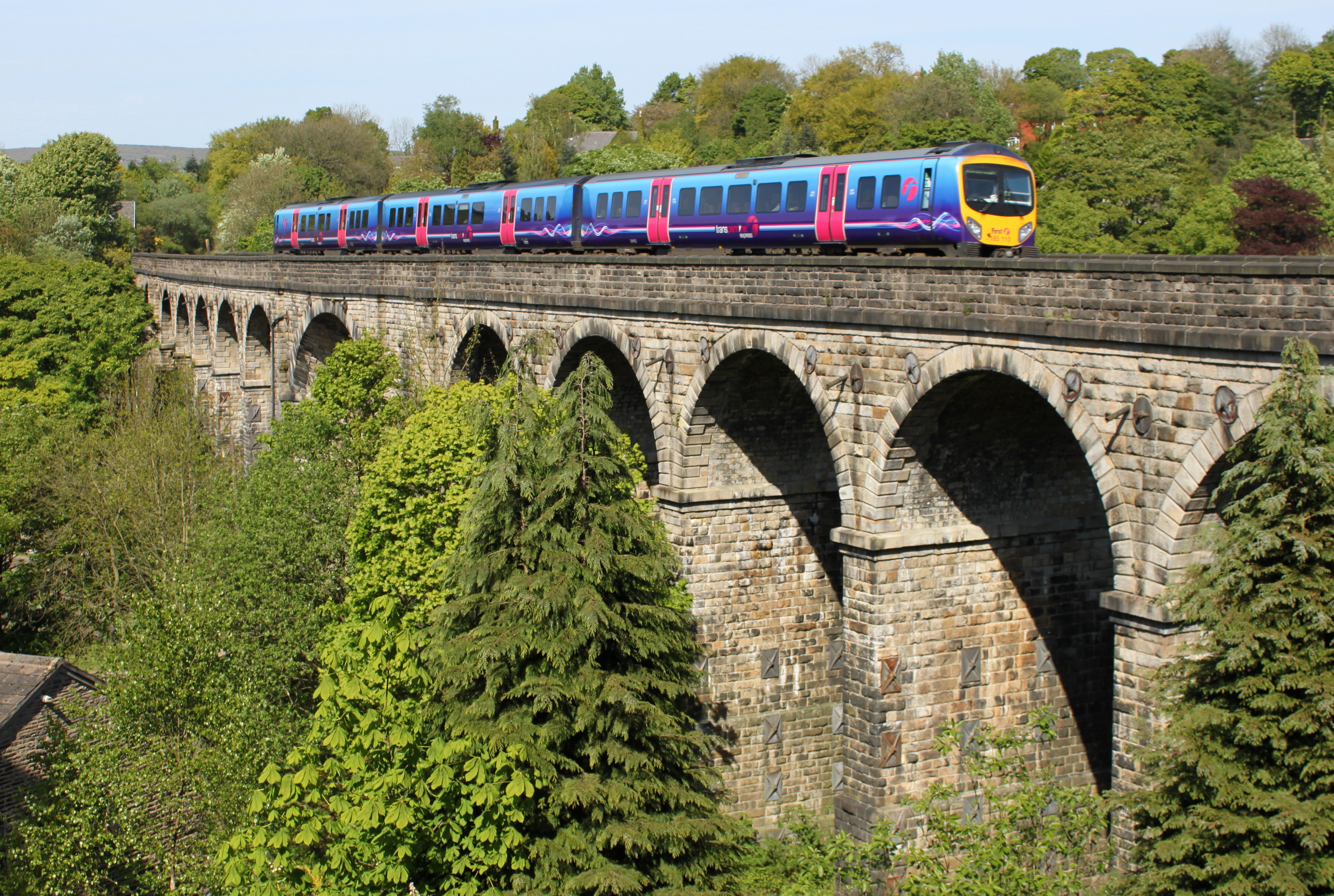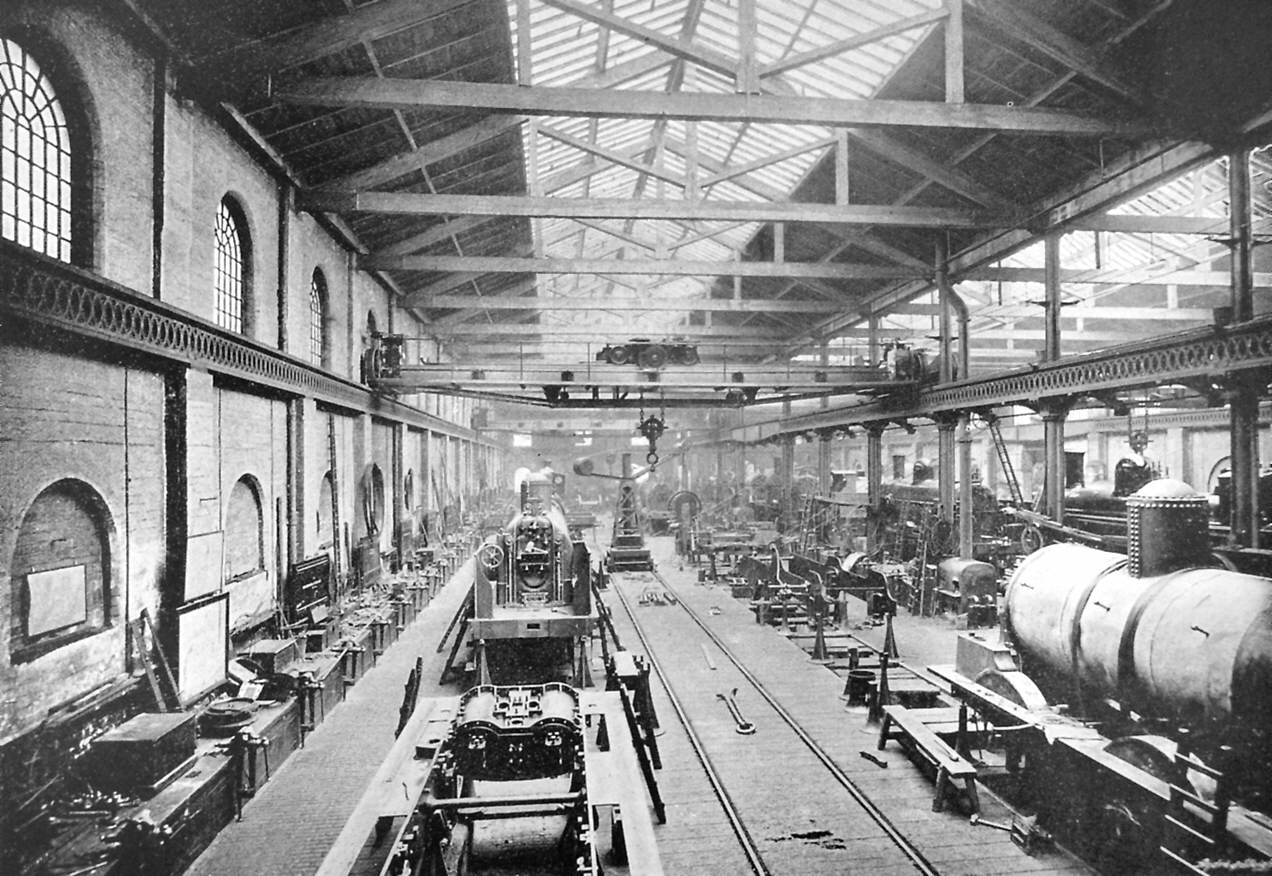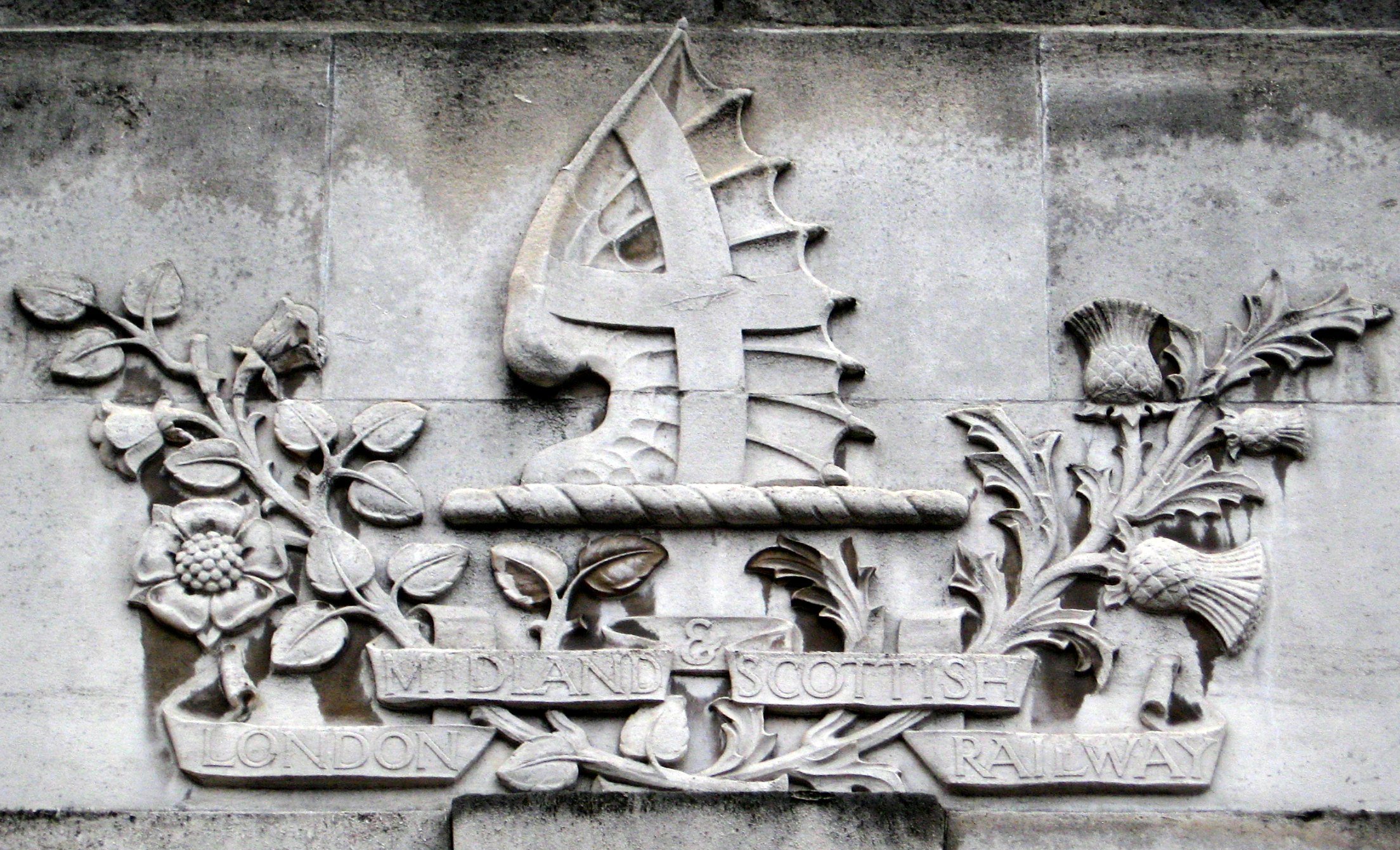|
Grotton And Springhead Railway Station
Grotton and Springhead railway station served the villages of Grotton and Springhead from 1856 until 1955. History The London and North Western Railway opened a branch from to Oldham Oldham is a town in Greater Manchester, England. It lies amongst the Pennines on elevated ground between the rivers River Irk, Irk and River Medlock, Medlock, southeast of Rochdale, and northeast of Manchester. It is the administrative cent ... on 5 July 1856. ''Grotton'' was one of two intermediate stations which opened on the same day. On 1 April 1900, the station was renamed ''Grotton and Springhead''. The station closed on 2 May 1955, when the Delph Donkey passenger train service to via Greenfield was withdrawn. The line remained in use for goods traffic until 1964. The station building still survives as a private residence. References *An Illustrated History of Oldham's Railways by John Hooper () External linksGrotton and Springhead Station on navigable 1948 O.S. map Dis ... [...More Info...] [...Related Items...] OR: [Wikipedia] [Google] [Baidu] |
Grotton
Grotton is a residential area in Saddleworth, a civil parish of the Metropolitan Borough of Oldham, in Greater Manchester, England. Located along the A669 road, it forms a continuous urban area with Austerlands and Springhead, which in turn link to Lees and Oldham, all of which are to Grotton's west. Historically a part of the West Riding of Yorkshire, Grotton was anciently a rural hamlet close to the boundary with Lancashire, and was centred on Grotton Hall, a former manor house. The hall was purchased by Edmund Buckley in the 1840s and inherited by his son Sir Edmund Buckley in 1864. Buckley sold the hall after he was declared bankrupt in 1876. Although some buildings date from the 17th and 18th century, the urbanisation of Grotton broadly took place following the Industrial Revolution; Grotton became a large suburb of Oldham following a residential building boom in the 1930s. The 1930s housing being brick built are in stark contrast to the millstone grit farm houses ... [...More Info...] [...Related Items...] OR: [Wikipedia] [Google] [Baidu] |
Metropolitan Borough Of Oldham
The Metropolitan Borough of Oldham is a metropolitan borough of Greater Manchester in England. It is named after its largest town, Oldham. The borough had a population of in , making it the sixth-largest district by population in Greater Manchester. The borough spans . Geography Part of Oldham is rural and semi-rural, with a quarter of the borough lying within the Peak District National Park. The Metropolitan Borough of Rochdale lies to the north-west, the Metropolitan Borough of Kirklees (of West Yorkshire) to the east, and the Metropolitan Borough of Tameside to the south. The City of Manchester lies directly to the south west and the High Peak, Derbyshire, Derbyshire Borough of High Peak lies directly to the south east, but Derbyshire is only bordered by high moorland near Black Hill (Peak District), Black Hill and is not accessible by road. History Following both the Local Government Act 1888 and Local Government Act 1894, local government in England had been administe ... [...More Info...] [...Related Items...] OR: [Wikipedia] [Google] [Baidu] |
Ordnance Survey National Grid
The Ordnance Survey National Grid reference system (OSGB), also known as British National Grid (BNG), is a system of geographic grid references, distinct from latitude and longitude, whereby any location in Great Britain can be described in terms of its distance from the origin (0, 0), which lies to the west of the Isles of Scilly. The Ordnance Survey (OS) devised the national grid reference system, and it is heavily used in its survey data, and in maps based on those surveys, whether published by the Ordnance Survey or by commercial map producers. Grid references are also commonly quoted in other publications and data sources, such as guide books and government planning documents. A number of different systems exist that can provide grid references for locations within the British Isles: this article describes the system created solely for Great Britain and its outlying islands (including the Isle of Man). The Irish grid reference system is a similar system created by the ... [...More Info...] [...Related Items...] OR: [Wikipedia] [Google] [Baidu] |
London And North Western Railway
The London and North Western Railway (LNWR, L&NWR) was a British railway company between 1846 and 1922. In the late 19th century, the LNWR was the largest joint stock company in the world. Dubbed the "Premier Line", the LNWR's main line connected four of the largest cities in England; London, Birmingham, Manchester and Liverpool, and, through cooperation with their Scottish partners, the Caledonian Railway also connected Scotland's largest cities of Glasgow and Edinburgh. Today this route is known as the West Coast Main Line. The LNWR's network also extended into Wales and Yorkshire. In 1923, it became a constituent of the London, Midland and Scottish (LMS) railway, and, in 1948, the London Midland Region of British Railways. History The company was formed on 16 July 1846 by the ( 9 & 10 Vict. c. cciv), which authorised the amalgamation of the Grand Junction Railway, London and Birmingham Railway and the Manchester and Birmingham Railway. This move was prompted, in ... [...More Info...] [...Related Items...] OR: [Wikipedia] [Google] [Baidu] |
London, Midland And Scottish Railway
The London, Midland and Scottish Railway (LMSIt has been argued that the initials LMSR should be used to be consistent with London and North Eastern Railway, LNER, Great Western Railway, GWR and Southern Railway (UK), SR. The London, Midland and Scottish Railway's corporate image used LMS, and this is what is generally used in historical circles. The LMS occasionally also used the initials LM&SR. For consistency, this article uses the initials LMS.) was a British railway company. It was formed on 1 January 1923 under the Railways Act 1921, which required the grouping of over 120 separate railways into four. The companies merged into the LMS included the London and North Western Railway, the Midland Railway, the Lancashire and Yorkshire Railway (which had previously merged with the London and North Western Railway on 1 January 1922), several Scottish railway companies (including the Caledonian Railway), and numerous other, smaller ventures. Besides being the world's largest ... [...More Info...] [...Related Items...] OR: [Wikipedia] [Google] [Baidu] |
Springhead, Greater Manchester
Springhead is a suburban area in the civil parish of Saddleworth in the Metropolitan Borough of Oldham, in Greater Manchester, England. Description Situated near the eastern edge of the Greater Manchester Urban Area, Springhead is contiguous with the village of Lees, and with the Austerlands, Scouthead and Grotton areas of Saddleworth. It was named after Springhead House, an historical dwelling which had a freshwater spring in its grounds. It is historically part of the West Riding of Yorkshire. The main hub is the Post Office. There is also a community centre. Springhead Infant and Nursery School and Knowsley Junior School serve the area. The football club (Springhead A.F.C.) play in the Manchester Football League, and the cricket club, Springhead CCC, in the Greater Manchester Cricket League. In March 2022, a petition was submitted to the parish council to construct 158 homes on the former Springhead Quarry, now a protected site for conservation. During the COVID-19 pand ... [...More Info...] [...Related Items...] OR: [Wikipedia] [Google] [Baidu] |
Oldham Mumps (LNWR) Railway Station
Oldham Mumps (L&NWR) railway station opened on 5 July 1856 as the terminus of the Oldham branch from , the station served the Mumps area of Oldham Oldham is a town in Greater Manchester, England. It lies amongst the Pennines on elevated ground between the rivers River Irk, Irk and River Medlock, Medlock, southeast of Rochdale, and northeast of Manchester. It is the administrative cent .... The station was probably only known as Oldham during its brief period of existence, the suffixes ''Mumps'' and ''L&NWR'' may have been added later to provide clarity between the various stations in Oldham. Hooper (1991) states the station was a temporary affair called Victoria. Several sources claim the station was only ever to be temporary. The station location is not precisely known, it has been described as being: * "...by a Junction with the ''Mumps'' Extension of the ''Lancashire and Yorkshire'' Railway at or near ''Mumps Mill''." (Italics and capitalisation in original). * "... ... [...More Info...] [...Related Items...] OR: [Wikipedia] [Google] [Baidu] |
Delph Donkey
The Delph Donkey was a line of the London and North Western Railway (LNWR) in northern England, which opened in 1849 to connect Oldham, Greenfield and Delph to the main Huddersfield to Manchester line. Route Two of the Saddleworth villages, Delph and Greenfield, are on the western slopes of the Pennine Hills. The branch followed the main cross-country line between Manchester and Huddersfield as far as Delph Junction, set above the village of Uppermill. Just before the junction was Moorgate Halt. Although it was situated on the main line, it was only ever used by trains to Delph. The Delph branch then left the main line and veered sharply left past Ladcastle Quarry before reaching Dobcross halt. It then continued to Delph with one additional intermediate halt that served the "Measurements" factory on Delph New Road, where trains only called at the start and end of the working day. The line terminated at Delph, where a private siding served Messrs Mallalieu's Bailey Mill. There ... [...More Info...] [...Related Items...] OR: [Wikipedia] [Google] [Baidu] |
Lees Railway Station
Lees railway station opened on 5 July 1856 at Lees, Lancashire, when the London and North Western Railway (L&NWR) opened the branch from to . The station was located to the south-east of St. John Street, where it crossed the railway. There were two running lines with platforms on the outer sides connected by a footbridge. The main building was to the south of the line and was accessed by a ramp running down from the road over-bridge. To the south east of the station was a goods yard with a goods shed and between the station and the goods shed was a coal depôt. The goods yard was able to accommodate most types of goods including live stock and was equipped with a ten ton crane. Services Initially services ran to and to with some of these continuing to . From 1 July 1862 trains were extended from to , later that year the L&NWR closed its Mumps station replacing it with . By 1866 the station saw fourteen services in each direction (four on Sundays) of which three continued ... [...More Info...] [...Related Items...] OR: [Wikipedia] [Google] [Baidu] |
Former London And North Western Railway Stations
A former is an object, such as a template, gauge or cutting die, which is used to form something such as a boat's hull. Typically, a former gives shape to a structure that may have complex curvature. A former may become an integral part of the finished structure, as in an aircraft fuselage, or it may be removable, being used in the construction process and then discarded or re-used. Aircraft formers Formers are used in the construction of aircraft fuselage, of which a typical fuselage has a series from the nose cone to the empennage, typically perpendicular to the longitudinal axis of the aircraft. The primary purpose of formers is to establish the shape of the fuselage and reduce the column length of stringers to prevent instability. Formers are typically attached to longerons, which support the skin of the aircraft. The "former-and-longeron" technique (also called stations and stringers) was adopted from boat construction, and was typical of light aircraft built u ... [...More Info...] [...Related Items...] OR: [Wikipedia] [Google] [Baidu] |
Railway Stations In Great Britain Opened In 1856
Rail transport (also known as train transport) is a means of transport using wheeled vehicles running in tracks, which usually consist of two parallel steel rails. Rail transport is one of the two primary means of land transport, next to road transport. It is used for about 8% of passenger and freight transport globally, thanks to its energy efficiency and potentially high speed.Rolling stock on rails generally encounters lower frictional resistance than rubber-tyred road vehicles, allowing rail cars to be coupled into longer trains. Power is usually provided by diesel or electric locomotives. While railway transport is capital-intensive and less flexible than road transport, it can carry heavy loads of passengers and cargo with greater energy efficiency and safety. Precursors of railways driven by human or animal power have existed since antiquity, but modern rail transport began with the invention of the steam locomotive in the United Kingdom at the beginning of the 19th ... [...More Info...] [...Related Items...] OR: [Wikipedia] [Google] [Baidu] |




